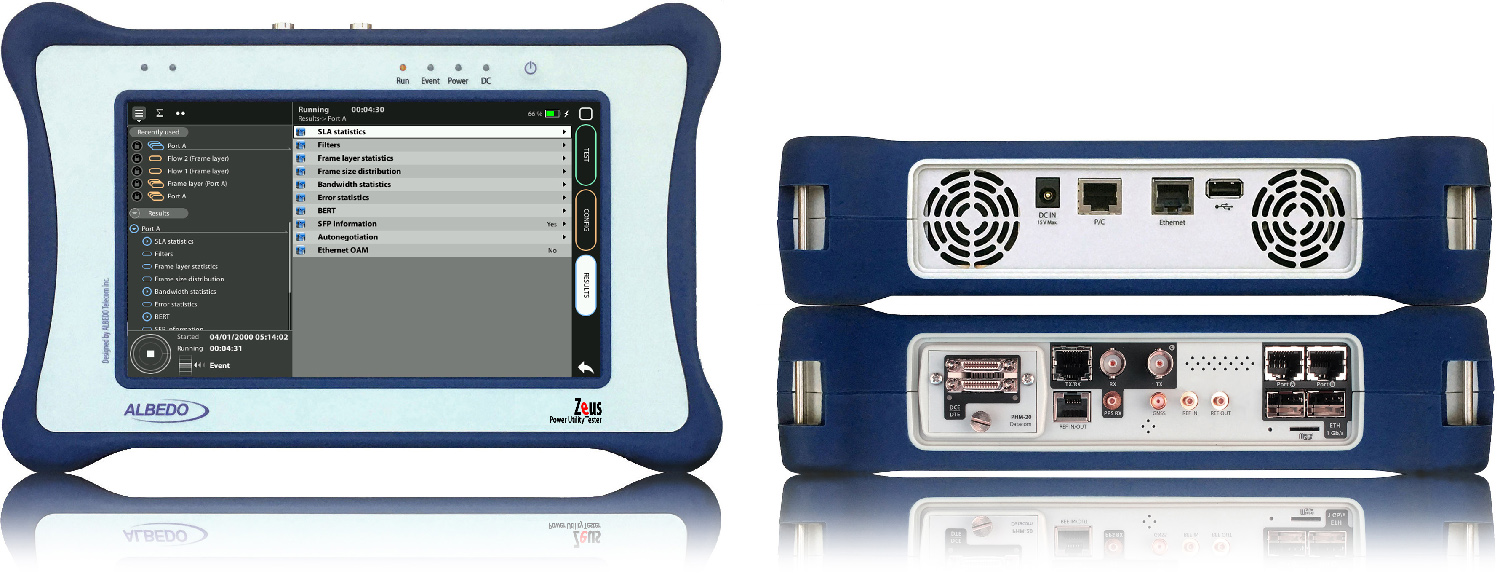Synchrophasors
A synchrophasor is a device that measures electrical waves in an electrical network. A synchrophasor uses a common time reference to synchronize multiple measurements from remote points on the electrical network.
BARCELONA 05.12.22
A synchrophasor is a type of measurement used in the power grid to provide real-time data about the electrical network. Synchrophasors are used to monitor the performance and stability of the power grid, and they can be used to detect and diagnose problems in the system. Synchrophasors are typically measured at 60 times per second, and they provide accurate, high-resolution data about the voltage, current, and frequency of the electrical signals in the grid. This information can be used to optimize the operation of the power grid and to improve its reliability and stability.
Synchrophasors deployment
The deployment of synchrophasors varies among different utilities and countries. In some cases, synchrophasors may be deployed across the entire power grid of a utility, while in other cases they may be deployed only in certain parts of the grid or in certain types of equipment. The decision to deploy synchrophasors is typically based on the needs and priorities of the utility, and the specific characteristics of the electrical network.

Fig 1. Substation in the Power Grid.
In general, synchrophasors are most commonly used in transmission systems, where they can provide valuable information about the performance and stability of the grid. They may also be used in distribution systems, especially in areas with high levels of renewable energy generation or in systems with complex load patterns. Some utilities may also use synchrophasors in their generation facilities to monitor the performance of their power plants.
Electrical parameters
Synchrophasors are used to monitor a variety of electrical parameters in the power grid. The specific parameters that are measured depend on the type of synchrophasor and the specific application for which it is being used. Some of the common parameters that may be measured by synchrophasors include:
- Voltage: Synchrophasors can measure the magnitude and phase angle of the voltage at a particular location in the grid. This information can be used to detect voltage problems and to optimize the operation of the grid.
- Current: Synchrophasors can measure the magnitude and phase angle of the current flowing through a particular location in the grid. This information can be used to identify problems with the flow of electricity and to optimize the operation of the grid.
- Frequency: Synchrophasors can measure the frequency of the electrical signals in the grid. This information can be used to detect frequency deviations and to optimize the operation of the grid.
- Power: Synchrophasors can measure the real and reactive power flowing through a particular location in the grid. This information can be used to optimize the operation of the grid and to detect problems with the flow of power.
- Phase angle: Synchrophasors can measure the phase angle between different electrical signals in the grid. This information can be used to detect problems with the phase alignment of the electrical signals and to optimize the operation of the grid.
These measurements are typically used for monitoring and control of the power system, as well as for protection and analysis.

Fig 2. Synchrophasor are key to manage the power system, protection and quality analysis.
Synchrophasors synchronization
Synchrophasors are measurements of the electrical quantities of a power system that require to be synchronized to a common reference time. To ensure the accuracy of synchrophasors, it is important that they are synchronized to a common reference time. There are several methods that can be used to achieve this synchronization, including:
- Precision Time Protocol (PTP): PTP is a networking protocol that allows devices to synchronize their clocks to a common reference time source, such as a GPS satellite or an atomic clock. PTP can be used to synchronize synchrophasors in a power system.
- Network Time Protocol (NTP): NTP is a protocol that allows devices to synchronize their clocks to a common reference time source over a network. NTP can be used to synchronize synchrophasors in a power system.
- Synchronous Ethernet (SyncE): SyncE is a standard for synchronizing Ethernet devices to a common reference time source. SyncE can be used to synchronize synchrophasors in a power system.
In summary, synchrophasors require synchronization to a common reference time, and this synchronization can be achieved using methods such as PTP, NTP, or SyncE that required to be verified by a proper testers such as ALBEDO ZEUS.
ALBEDO Zeus
Zeus is a tester designed to install and maintain the communications in the power industry. It supports legacy and new generation interfaces in order to verify Ethernet / IP, PTP, SyncE, ToD, IRIG-B, T1 / E1, C37.94, RS-232, G703 and protocols such as GOOSE, SV or MMS, therefore you will get a perfect vision and control of your infrastructures improving protection and data acquisition.

Fig 3. Zeus is tester designed to verify the synchronization of Synchrophasors of Power Utilities.
In substation automation many resources require accurate synchronization ranging from microseconds to milliseconds:
- Applications that use SV / GOOSE and need to minimize latency.
- Data acquisition at IED, RTU and MU.
- SCADA and the MMS protocol.
- Line protection schemes.
- Events recording.
- Synchro-phasors deployed across the WAN to monitor the power grid.
Zeus has a complete set of features for time commissioning by means of measurements, analysis and protocol emulations of PTP, NTP, IRIG-B, GPS, SyncE, T1/E1, 1PPS and BITS.


